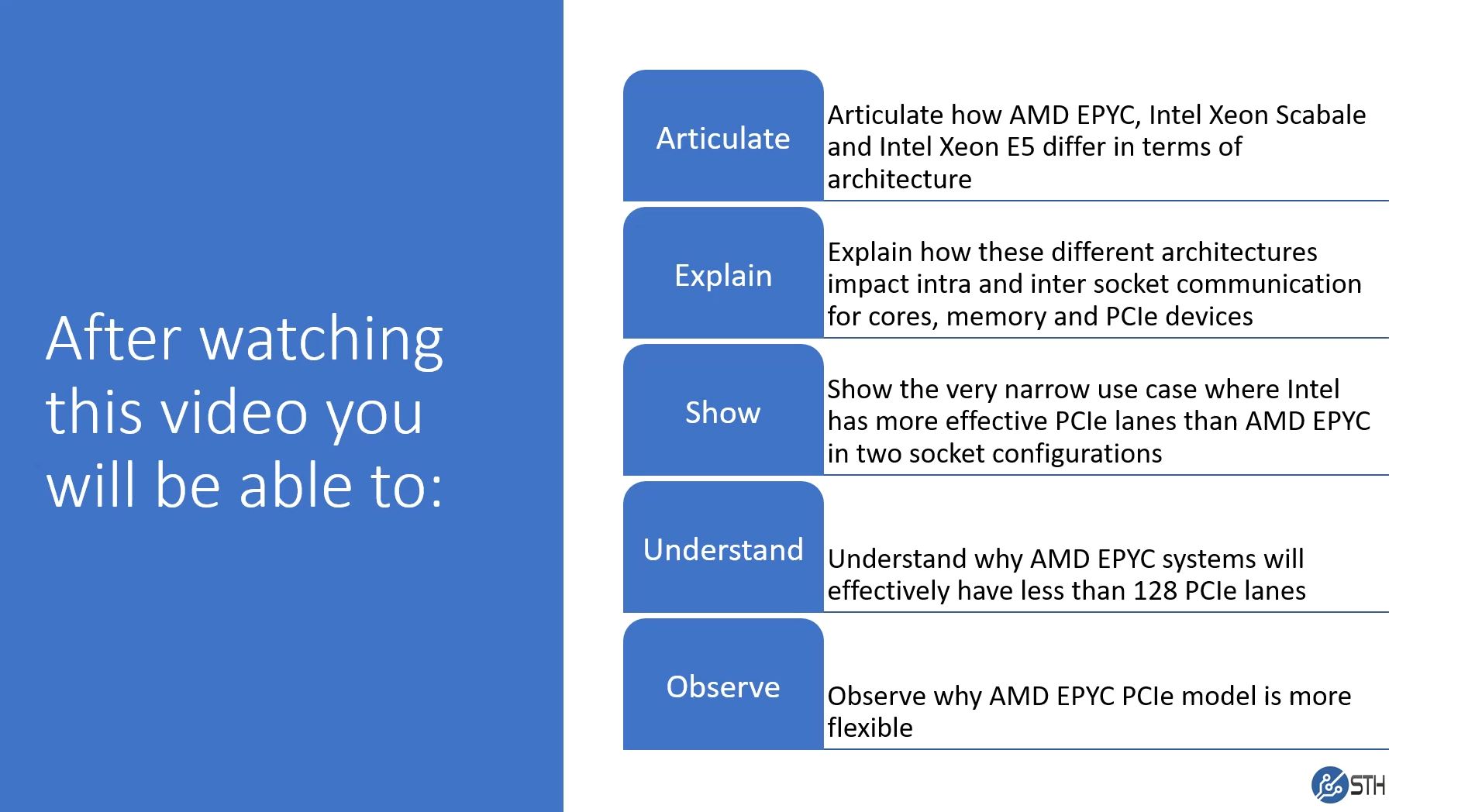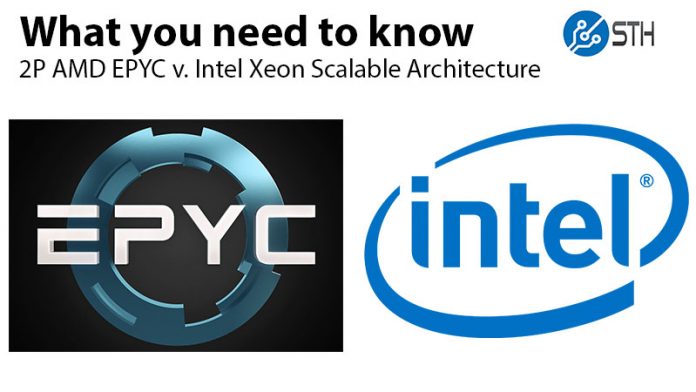After our AMD EPYC v. Intel Broadwell-EP (Xeon E5 V4) video, we wanted to provide an in-depth architecture deep dive using the new entry. Today, we have our AMD EPYC and Intel Xeon Scalable Architecture Deep Dive video. While we normally focus on our website having all of the information, it is a very technical subject. We tried to up-level the discussion and put it into a YouTube format that you can watch.
AMD EPYC and Intel Xeon Scalable Architecture Ultimate Deep Dive
In the overall technology publishing sector today, there is an incredible amount of fear, uncertainty, and doubt (FUD) being generated by both Intel and AMD marketing. Some of the technical descriptions we have read via links forwarded to gaming sites are appallingly bad to the point where they are untrue. For example:
- Dual-socket Intel Scalable systems can use up to 128 PCIe lanes and have more effective PCIe lanes than AMD EPYC in a specific use case.
- AMD EPYC Infinity Fabric, in a dual socket GPU system, needs to not just handle memory bandwidth but is also needs to be able to handle GPU-to-GPU or GPU to NIC bandwidth (e.g with NVIDIA GPU direct) in addition to memory transfers.
Intel and AMD both invest time to ensure STH is one of the resources on the Internet with a solid foundational understanding of server architectures since that is what we specialize in. As such, we wanted to do an in-depth architecture overview so that our readers can have intelligent discussions with their colleagues, customers, and vendors. We did up-level the discussion so that it is accessible to a broader audience.

Here is the video:
Although it is, by far, our longest video to date, it has just about every bit of information you will need to understand the basics of AMD EPYC v. Intel Scalable in dual socket configurations. Further, we do show why Intel Scalable Mesh Interconnect Architecture is an important differentiator over the Intel Xeon E5-2600 V4 series (and V1 through V3 for that matter.)
We have in-depth written articles about the new Intel Xeon Scalable architecture that you can find at our Intel Xeon Scalable Processor Family (Skylake-SP) Launch Coverage Central. We also have a series on AMD EPYC such as our AMD EPYC 7000 Series Architecture Overview for Non-CE or EE Majors piece. Please do your part to reduce FUD in the market by sharing these resources.





Best on the internet by a mega longshot now. Thanks! I’d hope it was a shorter video but you’re covering a lot of ground. Funny how some of those gaming sites are saying the 8 core EPYC is the same as 8 core Ryzen #clueless. Great show.
Great start of explaining AMD’s and Intel’s new server platforms. I hope we will see lots of test in the future with both platforms for a lot of different workloads, with respect to price/perf, power/perf and sheer power.
One of the few tech sites I’m _happy_ to unblock ad’s for.
Great information and well put together – if a little quiet on the volume in the video :) Look forward to the rest of your coverage (I trust it more than some other sites!)
I’m wondering, when we will get the full EPYC review?
The machine finally has what we think will be it’s shipping firmware so we are re-running performance benchmarks. We have see some significant gains (posted an example on our Twitter @ServeTheHome.)
Did not want to post benchmarks comparing non shippable AMD to shippable Intel. We are using a real production server.